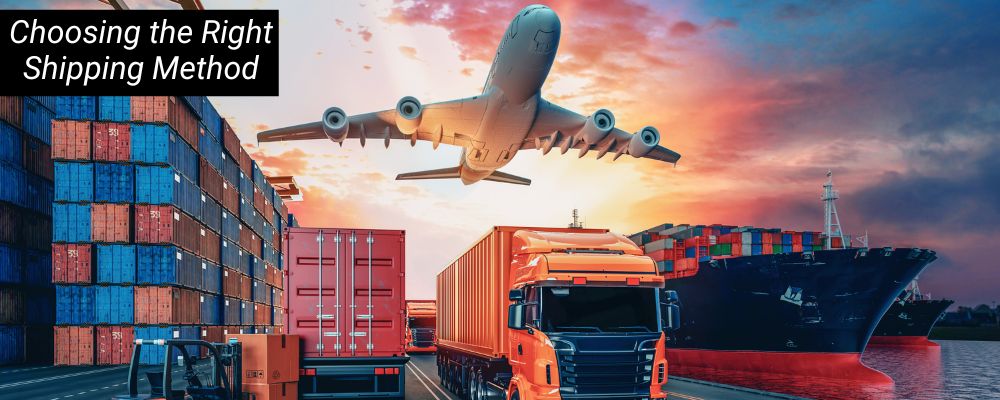
Shipping goods internationally can be a complex process, with various methods and considerations to take into account. As an importer or seller, it’s crucial to choose the right shipping method that suits your business needs while optimizing cost and transit time. In this article, we will explore the different modes of transportation available and discuss factors to consider when selecting the most suitable option for your shipment.
Understanding Different Modes of Transportation:
When it comes to international shipping, there are three main types of shipping methods you can choose from:
1. Courier Services:
Courier services such as DHL, FedEx, and UPS are commonly used for personal items or small quantities of goods. These services offer door-to-door delivery and handle all necessary paperwork related to customs duties and taxes. If you’re looking for convenience and ease-of-use but have a smaller shipment size, courier services may be preferable.
2. Air Transportation:
Air freight is known for its speed in delivering bulk goods across countries. It involves loading products onto planes for quick transport directly to their destination or customer. While air transportation offers faster transit times compared to sea freight, it tends to be more expensive due to higher fuel costs involved in air travel.
3. Sea Transportation:
Sea freight is the most popular mode of transportation due to its cost-effectiveness in handling large volumes of cargo over long distances. This method involves packing goods onto pallets or containers which are then loaded onto ships for transport across oceans worldwide.

Factors Considered When Choosing a Shipping Method:
1) Cost:
Shipping costs play a significant role in determining the profitability of your international trade plan.
– Courier services tend to come at a higher price point compared to other options.
– Air freight can be costly but offers speedy delivery.
– Sea freight is generally considered the most economical choice if delivery time isn’t urgent.
2) Size of Goods:
The size and weight of your cargo impact the most suitable shipping method.
– For smaller shipments (less than 100 kg), courier services are ideal.
– Air transportation is recommended for goods weighing between 100 and 200 kg.
– Sea transportation becomes cost-effective for larger volumes exceeding one cubic meter or 500 kg.
3) Transit Time:
The speed at which you need your products delivered is crucial in selecting the appropriate shipping method.
– Courier services offer quicker delivery times, typically within a week or less.
– Air freight takes around one to five days, depending on direct or transit service options available from airlines.
– Sea freight can be significantly slower, taking up to a month or more. However, if time isn’t a constraint, sea transportation remains the most cost-effective choice.
4) Complexity:
Consider the level of complexity involved in each shipping method and whether you require additional assistance from a freight forwarder.
– Courier services provide end-to-end solutions with minimal involvement required from shippers. They handle customs clearance and all other necessary processes on behalf of customers.
– Air and sea freight may involve more complex logistics that require coordination with multiple parties. Freight forwarders can assist in navigating these complexities effectively.

Making an Informed Decision:
To determine the best shipping method for your specific needs, consider combining information obtained from suppliers and local freight forwarders. By comparing rates provided by various couriers as well as insights shared by industry professionals, you can make an informed decision tailored to your business requirements.
For example:
1) If you have smaller shipments under 100 kilograms – opt for courier services such as DHL or FedEX due to their competitive pricing options and convenience in handling small quantities efficiently.
2) When dealing with heavier shipments ranging between 100 and 200 kilograms – air transportation proves beneficial since it offers faster transit times compared to sea transportation while still accommodating larger loads.
3) For larger volumes exceeding one cubic meter or weighing over 500 kilograms – sea transportation is the most cost-effective choice. While it may take longer, planning ahead and factoring in potential delays can help you optimize costs.








